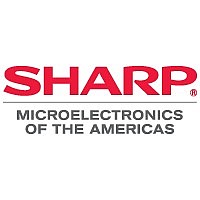LH28F800BJE-PTTL90 Sharp Microelectronics, LH28F800BJE-PTTL90 Datasheet - Page 10

LH28F800BJE-PTTL90
Manufacturer Part Number
LH28F800BJE-PTTL90
Description
IC FLASH 8MBIT 90NS 48TSOP
Manufacturer
Sharp Microelectronics
Datasheet
1.LH28F800BJE-PTTL90.pdf
(57 pages)
Specifications of LH28F800BJE-PTTL90
Format - Memory
FLASH
Memory Type
FLASH
Memory Size
8M (1M x 8 or 512K x 16)
Speed
90ns
Interface
Parallel
Voltage - Supply
2.7 V ~ 3.6 V
Operating Temperature
0°C ~ 70°C
Package / Case
48-TSOP
Lead Free Status / RoHS Status
Contains lead / RoHS non-compliant
Other names
425-1821
LHF80J01
LHF80J01
Available stocks
Company
Part Number
Manufacturer
Quantity
Price
Company:
Part Number:
LH28F800BJE-PTTL90
Manufacturer:
SHARP
Quantity:
1 900
Part Number:
LH28F800BJE-PTTL90
Manufacturer:
SHARP
Quantity:
20 000
2.1 Data Protection
When V
altered. The CUI, with two-step block erase, full chip
erase, word/byte write or lock-bit configuration command
sequences, provides protection from unwanted operations
even when high voltage is applied to V
functions are disabled when V
lockout voltage V
block locking capability provides additional protection
from inadvertent code or data alteration by gating block
erase, full chip erase and word/byte write operations.
Refer to Table 5 for write protection alternatives.
3 BUS OPERATION
The local CPU reads and writes flash memory in-system.
All bus cycles to or from the flash memory conform to
standard microprocessor bus cycles.
3.1 Read
Information can be read from any block, identifier codes
or status register independent of the V
can be at V
The first task is to write the appropriate read mode
command (Read Array, Read Identifier Codes or Read
Status Register) to the CUI. Upon initial device power-up
or after exit from reset mode, the device automatically
resets to read array mode. Six control pins dictate the data
flow in and out of the component: CE#, OE#, BYTE#,
WE#, RP# and WP#. CE# and OE# must be driven active
to obtain data at the outputs. CE# is the device selection
control, and when active enables the selected memory
device. OE# is the data output (DQ
when active drives the selected memory data onto the I/O
bus. BYTE# is the device I/O interface mode control.
WE# must be at V
and WP# must be at V
read cycle.
3.2 Output Disable
With OE# at a logic-high level (V
are disabled. Output pins (DQ
high-impedance state.
CCW
IH
.
≤V
CCWLK
LKO
IH
, RP# must be at V
or when RP# is at V
IL
, memory contents cannot be
or V
IH
0
. Figure 16, 17 illustrates
-DQ
CC
IH
), the device outputs
0
is below the write
15
-DQ
CCW
) are placed in a
IL
IH
CCW
15
. The device’s
, and BYTE#
) control and
voltage. RP#
. All write
3.3 Standby
CE# at a logic-high level (V
standby mode which substantially reduces device power
consumption. DQ
impedance state independent of OE#. If deselected during
block erase, full chip erase, word/byte write or lock-bit
configuration, the device continues functioning, and
consuming active power until the operation completes.
3.4 Reset
RP# at V
In read modes, RP#-low deselects the memory, places
output drivers in a high-impedance state and turns off all
internal circuits. RP# must be held low for a minimum of
100ns. Time t
mode until initial memory access outputs are valid. After
this wake-up interval, normal operation is restored. The
CUI is reset to read array mode and status register is set to
80H.
During block erase, full chip erase, word/byte write or
lock-bit configuration modes, RP#-low will abort the
operation. RY/BY# remains low until the reset operation
is complete. Memory contents being altered are no longer
valid; the data may be partially erased or written. Time
t
before another command can be written.
As with any automated device, it is important to assert
RP# during system reset. When the system comes out of
reset, it expects to read from the flash memory. Automated
flash memories provide status information when accessed
during block erase, full chip erase, word/byte write or
lock-bit configuration modes. If a CPU reset occurs with
no flash memory reset, proper CPU initialization may not
occur because the flash memory may be providing status
information instead of array data. SHARP’s flash
memories allow proper CPU initialization following a
system reset through the use of the RP# input. In this
application, RP# is controlled by the same RESET# signal
that resets the system CPU.
PHWL
is required after RP# goes to logic-high (V
IL
initiates the reset mode.
PHQV
0
-DQ
is required after return from reset
15
outputs are placed in a high-
IH
) places the device in
Rev. 1.27
IH
)
















